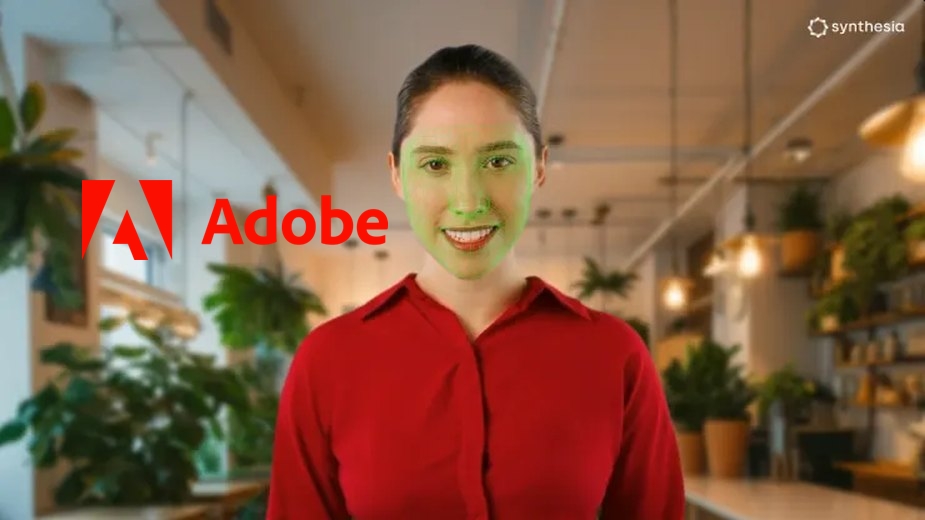Copyright TechStartups.com

Adobe has been on an AI buying spree—and its latest target shows how serious it is about owning the future of video creation. The company reportedly held talks to acquire Synthesia, the London-based startup known for its AI-generated video avatars, in a deal valued at around $3 billion, according to The Information. The discussions fell apart over price disagreements, but the news highlights Adobe’s growing appetite for generative media and its push to stay ahead in the creative software race. The negotiations took place in recent months, with Adobe expressing interest in fully acquiring Synthesia, whose platform lets users create lifelike avatars that speak in multiple languages. Synthesia’s technology has caught on quickly with enterprises—used for training videos, corporate announcements, and marketing—offering a cheaper and faster alternative to traditional video production. “Adobe talked to Synthesia, a U.K. creator of AI-generated videos, about buying the startup for about $3 billion,” The Information reported. Inside Adobe’s Failed $3 Billion Bid for Synthesia, the AI Video Startup Taking on Hollywood The talks reportedly broke down after both sides couldn’t agree on the valuation. For Adobe, it would have been one of its biggest bets on AI video to date, a logical follow-up to its Firefly generative model and the company’s broader strategy of embedding AI into its Creative Cloud suite. This wasn’t Adobe’s first move toward Synthesia. Earlier this year, Adobe’s venture arm invested in the startup in what both companies called a “strategic partnership” to “democratize high-quality content creation and make enterprise communication faster and more effective,” according to Synthesia CEO Victor Riparbelli. That partnership signaled Adobe’s interest in AI video long before acquisition talks began. The potential deal also echoes Adobe’s previous pursuit of Figma, the design platform it tried to buy for $20 billion in 2023 before regulators stepped in. Both cases show Adobe’s challenge: balancing its ambition to dominate creative software with growing antitrust scrutiny and inflated startup valuations. Synthesia’s Rise Founded in 2017, Synthesia has quickly grown into a major player in AI-generated media. Its simple interface lets users create professional videos by typing a script, choosing an avatar, and picking a voice. Behind that simplicity is a sophisticated technology stack capable of producing realistic, lip-synced avatars that can speak more than 120 languages. The company’s client list reads like a who’s who of global enterprises, serving over 70% of Fortune 100 companies. Its growth has been explosive—crossing $100 million in annual recurring revenue by April 2025, doubling year-over-year as more businesses embraced AI-driven communication. Synthesia’s fundraising history mirrors its rise. In January 2025, it closed a $180 million Series D led by Atlassian Ventures and PSP Growth, doubling its valuation to $2.1 billion. That followed a $90 million Series C in 2023, bringing total funding to more than $330 million. Investors include heavyweights like Nvidia, Accel, and Kleiner Perkins. Even with its strong momentum, Synthesia remains unprofitable, posting a £25.2 million pre-tax loss on £25.7 million in revenue for 2023. Riparbelli has been clear about the company’s stance: “We’ve never chased growth at any cost,” he said earlier this year, adding that the business has a clear path to profitability backed by solid cash reserves. What’s at Stake for Adobe The timing of the talks makes sense. AI video is heating up fast, with competitors like Runway securing investments from Google and Salesforce Ventures, and OpenAI’s Sora setting new standards for text-to-video realism. For Adobe, buying Synthesia would have been a shortcut to catching up in a field where startups are innovating faster than legacy software giants can move. After losing the Figma deal, Adobe has been leaning on internal innovation through Firefly and other generative features integrated into Photoshop and Premiere Pro. A Synthesia acquisition would have added a new dimension—turning Adobe into a serious player in avatar-based and automated video production. Even though the deal didn’t close, the earlier investment hints that collaboration between the two companies could continue in some form. For Adobe, partnerships may prove a safer route than billion-dollar acquisitions under tight regulatory eyes. And for Synthesia, the interest from one of the biggest names in creative software reinforces its position as one of the most valuable players in AI media today. As generative AI reshapes how content is made, companies like Synthesia are proving that professional-quality video can now be created in minutes, not days. And that’s exactly the kind of innovation Adobe doesn’t want to watch from the sidelines.



